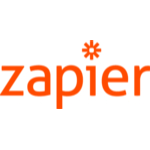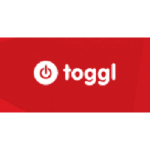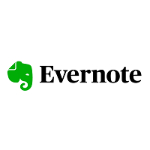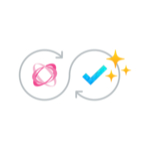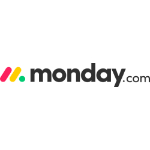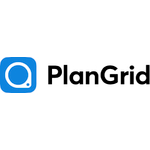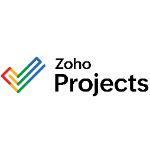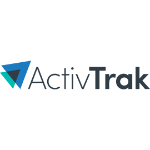TechnologyCounter provides genuine, unbiased real user reviews to help buyers make informed decisions. We may earn a referral fee when you purchase through our links, at no extra cost to you.
List of 15 Best Productivity Management Software
Showing 1 - 15 of 103 productsFieldproxy is a software designed to optimize and simplify field operations for businesses. With its user-friendly interface features, Fieldproxy revolutionizes the way businesses manage their field tasks, resulting in increased efficiency and produc...Read Fieldproxy Reviews
Todoist is a productivity tool designed to help you manage and prioritize your tasks effortlessly. With a sleek and user-friendly interface, Todoist allows you to organize your to-do list, set deadlines, and collaborate with others in real-time. Say...Read Todoist Reviews
Zapier, a cloud-based automation tool, revolutionizes the way businesses and individuals manage their online workflows. Connecting over 2,000 apps, Zapier allows users to automate repetitive tasks and integrate their favorite applications without wri...Read Zapier Reviews
HelloSign is a digital signature platform that is revolutionizing the way businesses and individuals handle important documents. With its user-friendly interface technology, HelloSign makes it easy to sign, send, and manage contracts and agreements f...Read HelloSign Reviews
Slack is more than just a communication tool, its a collaboration hub that brings teams together. With its user-friendly interface and seamless integrations, Slack makes it easy to stay connected and productive, no matter where you are. Say goodbye t...Read Slack Reviews
Toggl is a time tracking and productivity tool that helps individuals and teams stay organized, focused, is a . With its user-friendly interface and powerful features, Toggl simplifies the process of tracking and managing time, allowing users to boos...Read Toggl Reviews
Evernote is a digital note-taking app that is revolutionizing the way we organize and access our thoughts, ideas and important information. With its user-friendly interface and powerful features, Evernote allows users to capture, store and share note...Read Evernote Reviews
MindMeister is a mind mapping tool designed to help you organize, visualize, and collaborate on your ideas more effectively. With its user-friendly interface and powerful features, MindMeister is the go-to solution for teams, students, and individual...Read MindMeister Reviews
Trello, a popular project management tool, offers an efficient and user-friendly way to organize tasks, projects, and workflows. With its intuitive UI, Trello streamlines collaboration across teams, making it a top choice for businesses of all sizes...Read Trello Reviews
Samepage, the all-in-one collaboration tool designed to streamline communication and boost productivity for teams of all sizes. With features such as real-time collaboration, task management, and file sharing, Samepage makes it easy for teams to stay...Read Samepage Reviews
Monday.com is more than just a project management tool - its a dynamic platform that enhances productivity and collaboration within teams. With its user-friendly interface and customizable features, Monday.com streamlines processes and empowers indiv...Read Monday com Reviews
PlanGrid is a software designed to simplify construction project management. With its intuitive interface and robust features, PlanGrid helps teams collaborate effectively, stay organized, and save time and resources. Say goodbye to traditional pen-a...Read PlanGrid Reviews
Zoho Projects software is a tool that allows you to efficiently manage all your tasks and projects in one central location, from small day-to-day tasks to larger, more complex projects. This powerful Zoho Projects software is the perfect solution for...Read Zoho Projects Reviews
Tameday is a productivity software designed to streamline your daily tasks, projects, and schedules. With its intuitive interface and powerful features, Tameday helps you stay organized and focused, allowing you to maximize your time and achieve your...Read Tameday Reviews
ActivTrak is a employee monitoring and analytics solution. Empower your business with real-time insights and smart productivity tools to monitor and optimize employee performance. From tracking productivity and time spent on applications to analyzing...Read ActivTrak Reviews
- What Is Productivity Management Software?
- Top Reasons Why Businesses Need Productivity Management Software?
- What Are the Top Key Features of Productivity Management Software?
- What Are the Top Benefits of Productivity Management Software?
- What Are the Steps to Choose the Right Productivity Management Software?
- What Are the Types of Productivity Management Software for Different Industries?
- What Are the Technology Trends for Best Productivity Management Software?
- What Are the Deployment Options for Productivity Management Software?
What Is Productivity Management Software?
Productivity management software refers to a category of software packages specifically developed to facilitate the management of an individual's or an organization's productivity. The computer application in question facilitates the organization and tracking of projects, tasks, and objectives, hence enhancing efficiency and effectiveness.
The platform provides a range of functionalities such as goal establishment, task administration, calendar integration, and team cooperation, enabling enterprises to maintain productivity while also facilitating the assessment of outcomes.
Productivity management software plays a crucial role in facilitating goal setting by enabling the identification of both short-term and long-term objectives, establishing specific deadlines, and allocating tasks to the team.
Additionally, proper coordination and job planning can facilitate the efficient progress of a team, enabling them to remain focused and achieve their objectives expeditiously. Work management is a crucial component of PM software since it enables users to allocate tasks to members of their team, establish timelines for work completion, track and record progress, and assess the tasks' alignment with objectives and deadlines.
This practice aids in guaranteeing that every task is being effectively managed. Calendar capabilities are crucial in facilitating the organization of meetings, deadlines, and the dissemination of work assignments on a daily basis, hence ensuring optimal task management and coordination among everyone involved.
Additionally, it aids in the prioritization of activities and ensures alignment among the team. Collaborative tools allow team members the capability to engage in discourse and exchange documents amongst themselves.
In conclusion, productivity tools for work serve as an indispensable asset for organizations seeking to monitor and evaluate their progress. Effective organization and management practices have the potential to enhance team productivity and facilitate the timely achievement of goals.
Top Reasons Why Businesses Need Productivity Management Software?
1. Enhances efficiency: Productivity management software enhances staff efficiency through the provision of structured task management, prioritization capabilities, and streamlined reporting functionalities.
2. Streamlines workflow: The best productivity software enables firms to effectively oversee and optimize the utilization of assets, streamline task execution, and efficiently handle various projects. This enables the employees to allocate additional time towards tasks that provide higher productivity, while also utilizing the gathered data to make better informed decisions.
3. Time tracking: PM software offers businesses the capability to monitor and record employee time tracking, enabling them to get insights into the allocation of time and its influence on organizational productivity.
4. Increased collaboration: Productivity management software facilitates inter-team collaboration, enabling the sharing of ideas and the identification of shared problem-solving strategies.
5. Greater transparency: Productivity software enables businesses to enhance their operational transparency by facilitating real-time monitoring of projects and rapidly evolving tasks. This heightened visibility empowers organizations to gain comprehensive insights into their processes and operations.
6. Improved customer service: organizations can enhance their customer service practices by implementing productivity software to improve organizational efficiency. This software enables organizations to provide clients with more precise data, hence enhancing the overall quality of customer service.
7. Data analysis: Organizations have the ability to utilize the data acquired through productivity management software in order to obtain valuable insights into their operational procedures and areas of inefficiency. By doing so, they can then apply enhanced planning and strategic approaches.
8. Improved planning: The best productivity tools for work facilitate efficient task and project planning and organization for enterprises, enabling enhanced operational monitoring.
9. Boosts employee motivation: The utilization of PM software has the potential to enhance staff morale and motivation by facilitating the employee monitoring of individual and team progress.
10. Automates processes: Productivity management software facilitates the automation of routine operations, such as task reminders and notifications, so enabling employees to allocate their attention towards more efficacious endeavors.
11. Improved project management: The best productivity software offers valuable insights that enable firms to enhance their project, resource, asset, and task management capabilities.
12. Goal setting: PM software offers businesses a platform to establish objectives and monitor advancements towards them, enabling them to acquire valuable insights into the productivity of their workforce.
13. Cost savings: The utilization of productivity management software enables firms to achieve enhanced efficiency, resulting in cost savings related to wasteful procedures.
14. Increased productivity: Productivity tools for work facilitate efficient monitoring of productivity levels within firms, enabling data-driven decision-making to enhance overall performance.
15. Risk management: By enhancing their visibility and gaining deeper insights into their operations, firms may effectively mitigate risk management by promptly receiving alerts and taking immediate measures.
What Are the Top Key Features of Productivity Management Software?
The salient characteristics of productivity management software can be broadly categorized into two distinct groups: project management and task management.
Project Management Features:
• Real-time status updates – Enables users to effectively manage projects and promptly adapt to evolving circumstances based on project advancement.
• Resource management tools – Establishes budgets and personnel plans in order to optimize productivity and monitor resource utilization.
• Automated reporting & analytics – Assisting in the identification of trends and underlying factors contributing to inefficiency.
• Automated notifications – The best productivity software guarantees that users maintain awareness of deadlines and objectives.
• Cloud integration – Facilitates remote accessibility to data and projects at any location and time. The features of task management
• Automated task assignment – The optimization of project completion time is achieved by the automated assignment of work to appropriate individuals.
• Dashboard visualization - provides a graphical representation of data and the advancement of tasks
• Goal tracking – Productivity tools allows users to monitor their advancement in accomplishing goals within the context of task management.
• Task prioritization – The process of prioritizing tasks is based on their relative relevance and urgency.
• Contextual collaboration – PM software enables users to collaboratively engage in real-time task completion.
• Customized reminders – Assisting users in adhering to timeframes and meeting deadlines.
What Are the Top Benefits of Productivity Management Software?
1. Increased Efficiency: Productivity management software facilitates the optimization of processes and enhancement of efficiency through the automation of formerly manual tasks and the elimination of errors.
2. Improved Collaboration: The utilization of productivity tools facilitates the synchronization of project updates and information across all members of a business, hence enhancing team collaboration and efficiency.
3. Reduced Costs: By implementing automated processes and enhancing cooperation, organizations have the potential to decrease both the duration and expenses connected with their projects.
4. Increased Productivity: The implementation of productivity management software enables the automation of various procedures, so allowing staff to allocate their time and efforts towards tasks of greater significance. Consequently, this leads to a notable enhancement in overall productivity levels.
5. Enhanced Visibility: The utilization of the best productivity software facilitates the automation of various procedures, enabling employees to allocate their time and efforts towards projects of greater significance. Consequently, this leads to a notable enhancement in overall productivity levels.
6. Real-time Reporting: PM reporting software is designed to collect real-time data, enabling the extraction of valuable insights on productivity levels and facilitating the development of informed initiatives for the future.
What Are the Steps to Choose the Right Productivity Management Software?
1. Establish the primary areas that need to be managed: Please take into account many domains that necessitate the implementation of productivity management, including but not limited to task management, scheduling, communication, file storage, and project tracking.
2. Identify the needs of the team: When evaluating the suitability of a program for a specific product or service, it is important to take into account various factors. These factors include the size of the team involved, the complexity of the activities to be performed, the compatibility of the software with current systems, and any additional needs that may be necessary.
3. Compare and assess potential software: Examine the characteristics of the software, including its interface and the reputation of the firm providing the software.
4. Schedule a demonstration or trial period: Kindly solicit a complimentary demonstration or a trial period at no cost to evaluate the efficacy of the best productivity tools for work.
5. Carefully consider the options: It is recommended to peruse customer evaluations, initiate contact with the company for additional inquiries, and seek information regarding any support services and training opportunities.
6. Make the final decision: Conclude the ultimate decision of the most optimal productivity management software that aligns with the particular requirements of the team.
What Are the Types of Productivity Management Software for Different Industries?
Productivity management software can fall into three broad categories:
1. Project/Task Management Software: Project planning involves the utilization of several tools, such as deadlines, milestones, and goals, to effectively organize and structure projects. Additionally, it serves as a means to assess and monitor the progress made throughout the project's duration. This particular program is widely favored among organizations operating in the construction, engineering industry, and technology sectors.
2. Document Management Software: Frequently employed by enterprises requiring the ability to generate, monitor, archive, and engage in collaborative efforts pertaining to documents from remote locations. This might be especially advantageous for enterprises operating within the healthcare, legal, and financial sectors.
3. Business Process Automation Software: The purpose of the best productivity tools for business process management is to streamline and mechanize recurring duties, ranging from the initiation of new client accounts to the handling of financial invoices.
Productivity software has the potential to provide advantages to organizations operating in diverse sectors that necessitate compliance with a prescribed set of workflow procedures.
What Are the Technology Trends for Best Productivity Management Software?
The prevailing technology developments in the realm of productivity management software involve the utilization of cloud-based applications that possess the capability to adapt and accommodate a company's growing requirements.
These technologies frequently possess the capability to seamlessly interact with pre-existing systems, hence enhancing their operational efficiency. The best productivity tools for work should possess a user-friendly interface, providing automated solutions that streamline the management of many activities.
The incorporation of features such as task tracking, automatic notifications, time-tracking, and analytics has the potential to enhance productivity and optimize operational processes. An other noteworthy development in the best productivity software pertains to prioritizing mobile-friendly accessibility, so enabling users to conveniently access and manipulate data across various devices.
Ultimately, prioritizing customisation is crucial, as it enables organizations to adapt the tools according to their distinct needs and specifications.
What Are the Deployment Options for Productivity Management Software?
There are various deployment choices available for productivity management software, which encompass cloud-based, on-premise, and hybrid implementations. Cloud-based solutions refer to the practice of implementing software over a cloud computing infrastructure, such as Amazon Web Services (AWS), Microsoft Azure, Google Cloud Platform (GCP), or other similar providers.
The process of on-premise deployment for PM software involves the installation of software within an organization's internal IT infrastructure, specifically on servers located at their physical premises. Hybrid solutions enable enterprises to leverage a combination of cloud-based and on-premise deployments in order to cater to their specific requirements.


